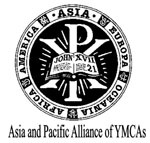|
There are no easy answer and solutions to the questions on the whys and wherefores of terrorism. I only know that even when the individuals known for their terrorist acts have died, terrorism continues to happen. Some terrorism experts suggest that instead of demonizing the terrorists, we must focus on the determinant contexts, structures and systems of evil that becomes possibly the breeding grounds that lure even good people to become perpetrators of evil. A psychologist notes that negative labeling makes us “disrespectful of the high level of the intellect behind these deeds, however distorted or diabolical it may be.” Thus, we need to examine how our social, political, economic, cultural and religious value systems could be distorted to justify an evil act. In line with the root-cause theory of terrorism, experts suggest that society must address the social, economic and political roots of terrorism and provide early interventions. Another task is for us to break down stereotypes that we hold about people around us – be it religious, racial, ethnic, economic, and others ways. The social neuroscientists suggest that we train our brains to cultivate the pathways of empathy and compassion, and to see a situation from the other’s perspective.
In the aftermath of the horror that happened on that fateful Easter Sunday, we hear different voices and views on the incident. Some tend to use the situation to put forward their various interests, including political interest. There was blaming on security negligence. Meantime, many lives are lost. The wounded continue to struggle to hold on to dear life. The victims are dead. Those who survived and lost their loved ones continue to wail in grief; some refused to be comforted. In the midst of all these, the call from a Sri Lankan priest, J.M. Joseph Jeyaseelan, CMF, to his fellow Sri Lankans and to the people around the world must be heeded when he said:
“[T]his is not the time to be guided by emotions pitting one ethnic or religious group against another. This is not the time for us to make guesses and start to victimize one or another group. . . May they who endure the crisis and loss soon receive shalom/salaam. May they also find the strength someday to murmur these words: "May they be forgiven for they didn't know what they were doing."”
~ Muriel Orevillo-Montenegro
Coordinator, Interfaith Cooperation Forum
APAY Green YMCA Awards 2018
Volunteer 175 - World Challenge 2019
The Asia and Pacific Alliance of YMCAs joins hands with YMCAs worldwide for World Challenge 175 under the auspices of the World YMCA. APAY is calling on all the local YMCAs and its members of our region to come together and support the Volunteer 175 challenge on Saturday 8 June, to celebrate the movement’s 175th anniversary.
Each of the local YMCAs are running various community services in their own localities. This campaign will give them an opportunity, inviting members of their communities to volunteer and get involved in the community works for this event of YMCA World Challenge.
This will see YMCAs in 120 countries empower young people to volunteer 175 minutes of their time for the betterment of their community, paying homage to the millions of volunteers who have changed the world for the better through YMCA.
YMCA is using the Volunteer 175 challenge, which will see YMCAs across the globe working together for the betterment of their communities, to bring together people of all ages on the day to show that YMCA can achieve amazing things by working together.
“Through this World Challenge, YMCA hopes to showcase our impact as a volunteer-led movement for good. Young people all over the world will have the opportunity to give back their own share of contribution to their respective communities.
For detailed information of this program and to register, visit the website of the World YMCA www.ymca.int and in addition you can contact Mr. Palmer Hestley, Director of Communications, email: palmer@ymca.int if you have any queries.
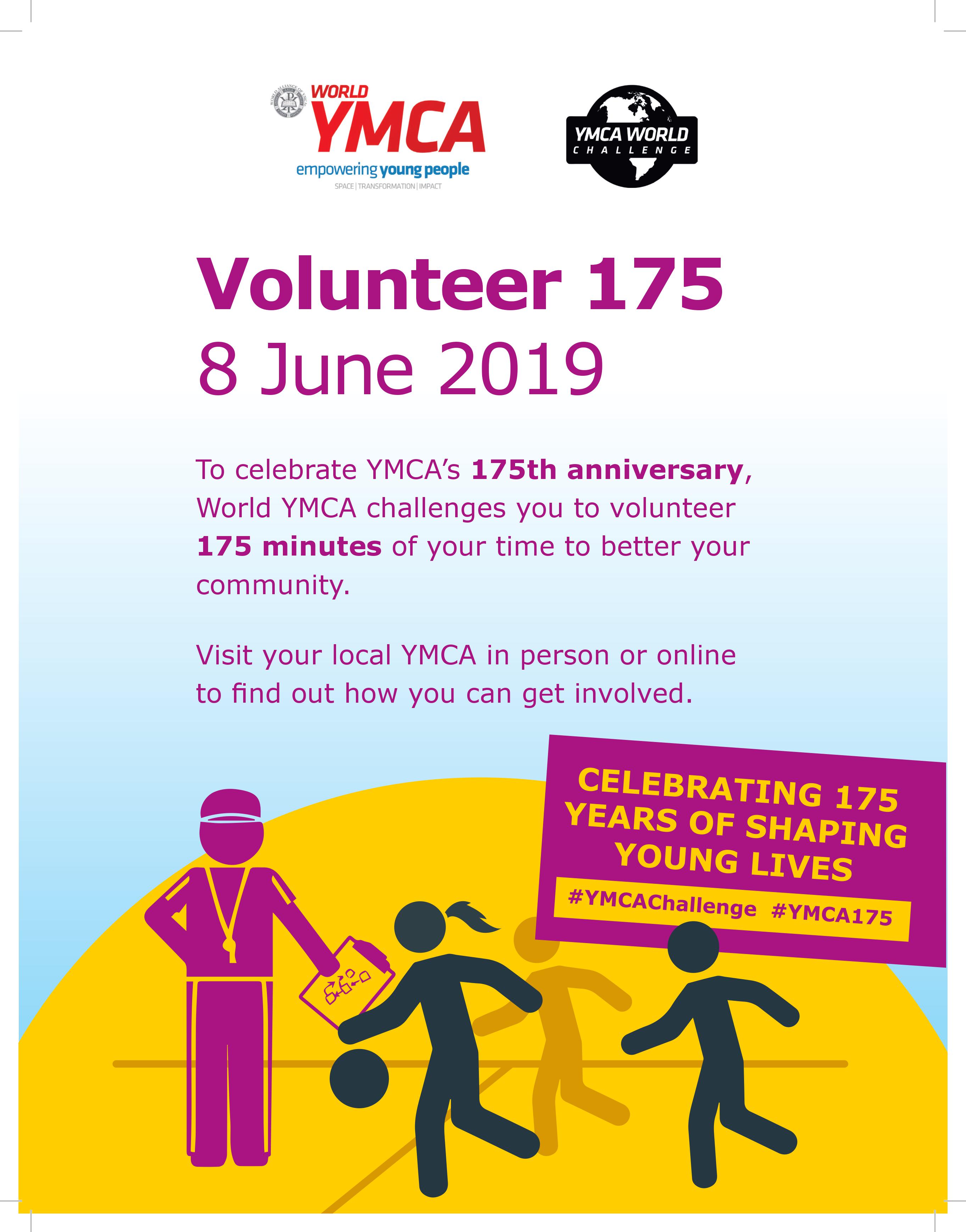
~ Duncan Chowdhury, Executive Secretary

Peace Chain Campaign held in South Korea
On 27 April, the first anniversary of the 4.27 (or 27th April) Panmunjom Summit between South and North Korea was observed by the people of South Korea. More than 150,000 people from all corners of South Korea gathered along the 500 km-long Demilitarized Zone (DMZ) between the two Koreas to perform a “human peace chain” connecting hand-in-hand from the far-west to far-east of the DMZ – a collective act of expression of the Korean people’s aspiration towards sustainable peace and reunification of the divided nation.
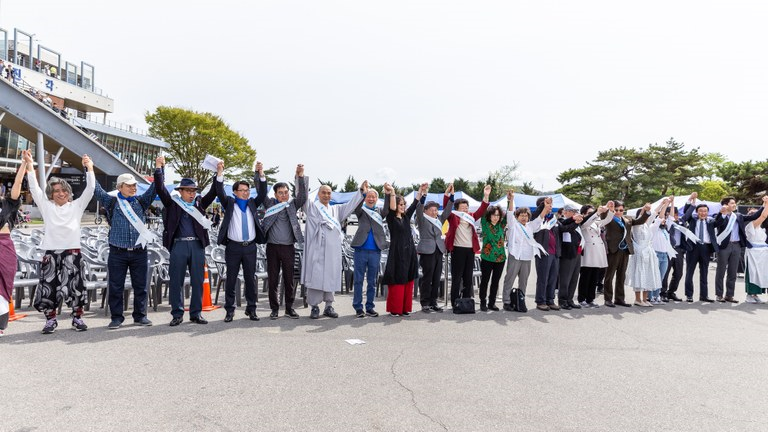 |
| ↑ People from all folks joining hands at Paju near DMZ (photo by John C Park) |
The idea had been suggested by Rev. Jung Jiseok, Principal of Border Peace School, about one year ago during a weekly prayer meeting to those ecumenical leaders working for peace and reunification of the Korean peninsula. Inspired and resolved by the prayer meeting, the human chain campaign started to gather forces from various ecumenical organizations including Korea YMCA, YWCA, National Council of Churches of Korea, many civil society organizations and other religious organizations who expressed their willingness to join the campaign.
Participants of the Human Peace Chain campaign, in a call to action issued on 27 April, said the strong aspiration of the people has been expressed through this huge wave of the people. “With one heart, we took our neighbors' hands, looking for the day when we will hold our hands of North and South together from Halla Mountain to Baekdu Mountain,” they declared that “through 70 years of separation, we learned that peace is the responsibility of our people.” The core spirit of this campaign lies in a firm belief that a true power towards national reconciliation, peace building and reunification comes from people’s spontaneous participation in an organized way.
The participants of the campaign also asserted that “peace building in the Korean peninsula is closely connected to regional and world peace, and the peace that we will have restored will definitely benefit the world”. “We do not doubt that the suffering of the 70 years’ division will paradoxically serve as the foundation and the asset for the advancement of the world.” They also expressed their wish and belief that their land will become a land without nuclear weapons. “Therefore, break down the barrier that separates the nation and make this land free,” the call reads. “For the past 70 years, people in the North and South have lived in different systems, but the Korean people will converge creatively, and the world will witness the peace of the land unfolding in the future.” The human peace chain campaign also urged people to resist false power that tends to divide not unite. “Let us cry to the world that peace of this land is the will of heaven and the desire of the people!”
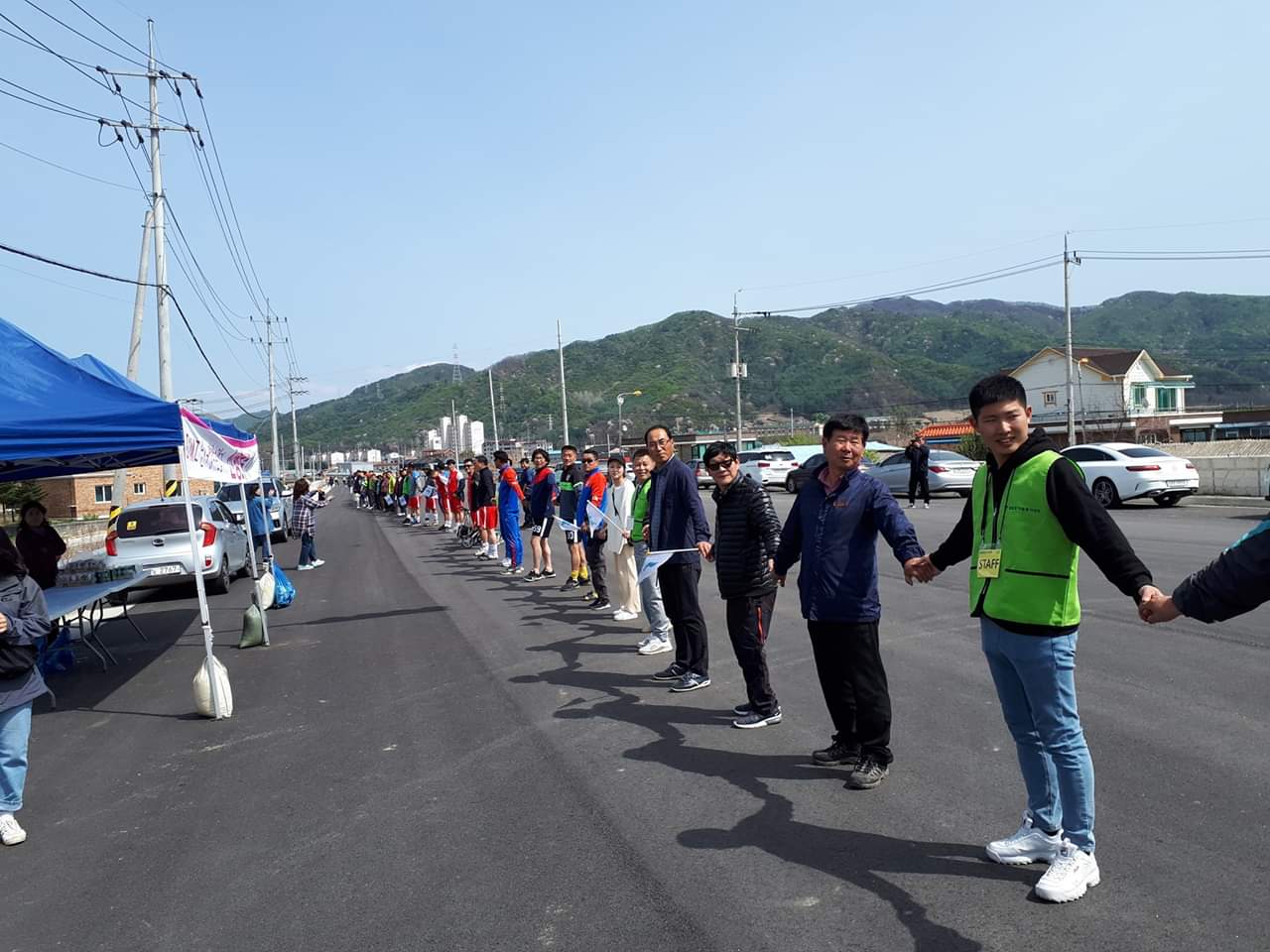 |
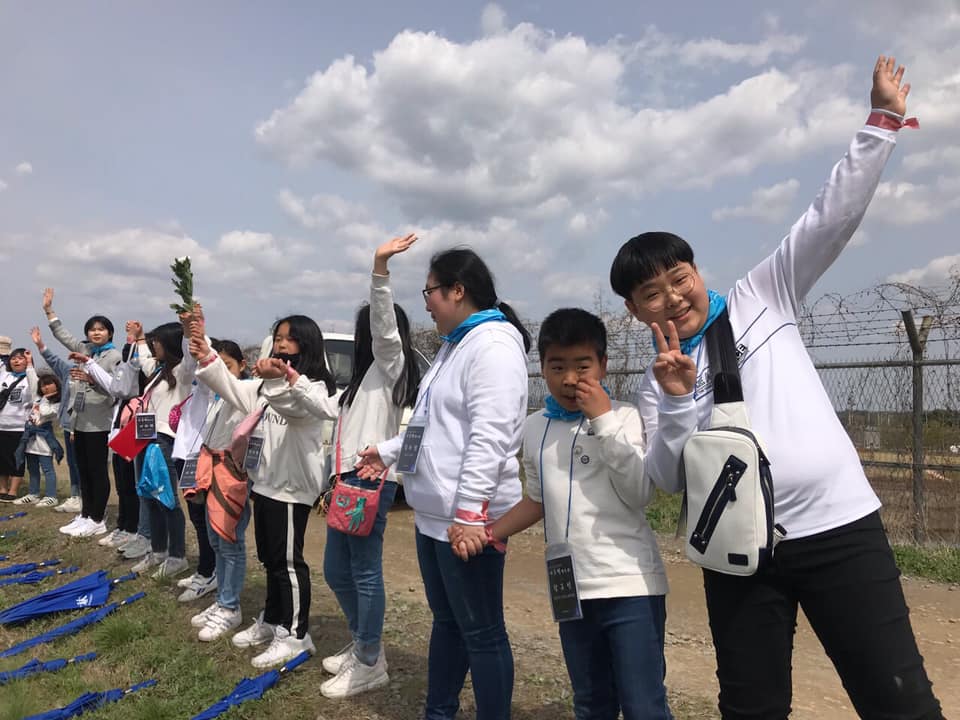 |
| ↑ Human peace chain at Cheorwon DMZ area |
↑ Mokpo YMCA Children's Camp participating at
DMZ Human Peace Chain |
The human chain campaign is regarded as a historic event in the following aspects. Firstly, it was people’s spontaneous movement, without setting a hierarchical structure in the movement and maintaining a distance from politics or any partisan intervention. Secondly, it was very inclusive movement where different religious organizations/institutions joined together towards a common aim of expressing people’s aspiration for reconciliation and peace building in the Korean Peninsula. Thirdly, the campaign, from the beginning, focused very much on grassroots action taking place at each and every village/community near DMZ. In 4.27 DMZ Peace Conference held one day prior to the campaign, participants expressed their wish that the 2nd human chain campaign next April will be able to invite as many as possible peace activities from all around the world, making the campaign a global peace agenda and thereby expressing their solidarity with Korean people’s aspiration for peace and reunification of the divided nation.
~ Lee Yun-Hee, MS Coordinator

|
